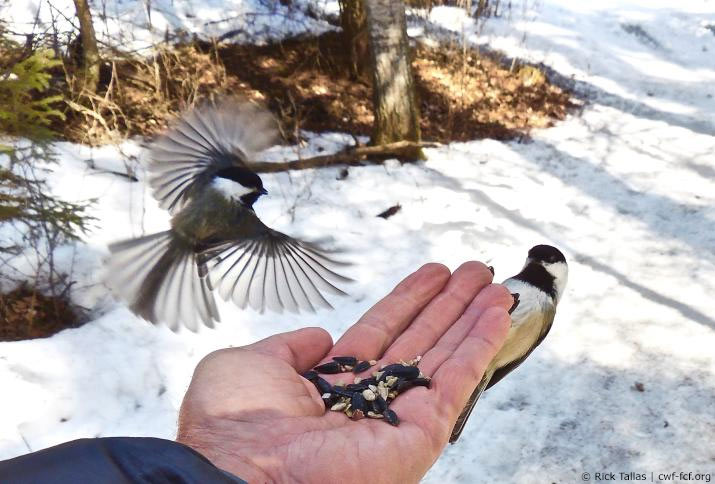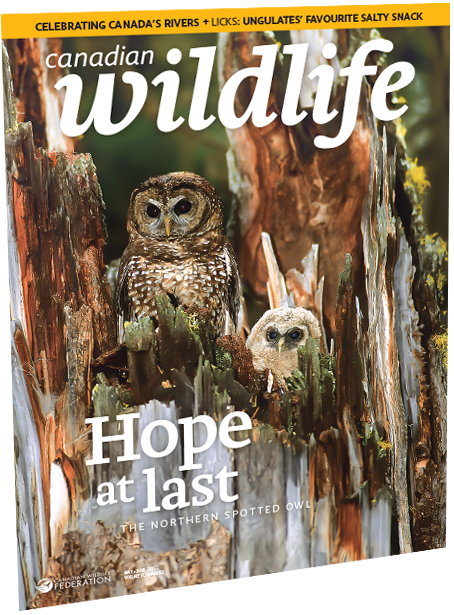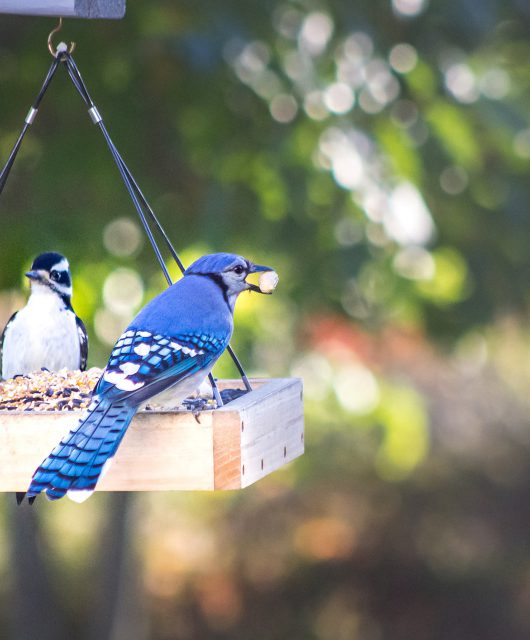Is it OK to feed a feathered friend in your palm? Our resident expert says yes, but only in the right circumstances.
It is well known that certain bird species can be enticed to take various kinds of food items right out of your hand. Bluebirds, chickadees, jays and nuthatches, to name a few, can be trained to take mealworms or seeds from your palm. You can feed several hummingbirds at once from sugar water held in your hand.
But just because we can, does that mean we should? Here are my thoughts.

Allow me to first draw my lines in the sand.
First, I am against offering mice, live or dead, to any bird of prey for any reason, because the raptor being fed could end up associating all humans with food offerings, a bad thing for all concerned. What’s more, certain species, like barred owls, that will take live mice from the hand also are known to strike humans while defending their nests. Besides potential physical injury to both parties, you can imagine the lifelong trauma suffered by a child after such an attack. And there’s the reputational damage to raptorial birds in the public eye at a time when they need our protection. It has also been shown that feeding raptors live prey near a road can lead to collisions with vehicles.
Second, I am opposed to hand-feeding ducks, geese, swans and gulls in parks and especially on public beaches. Besides their growing numbers annoying beachgoers, their copious feces in the water can cause disease like Escherichia coli in bathers. I speak from experience. Gulls and swans can also become dangerously aggressive.
Third, feeding threatened or endangered species from the hand is not recommended. For instance, supplementing the food of endangered Florida scrub-jays may harm their breeding success by affecting the timing of fledging their young. So, when is it OK to hand-feed birds? Well, since we already offer various healthy foods to our backyard birds via our feeders, I personally see no wrong in them getting food from our hands too. What about hand-feeding birds in public parks? I know of no scientific studies supporting the notion that these birds become entrained to expect to be fed and then stressed in some manner when food is not forthcoming. I believe birds that willingly come to humans, whether it be to a feeder or a hand, merely treat them as fast-food outlets, always reverting to natural foods when available.
I leave you with one last example — offering food to Canada jays (hopefully, our future national bird) at a road stop, at a campsite or on a hiking or ski trail. While this activity evokes much pleasure and even nurtures a love for nature, experiments conducted in Algonquin Park by Dan Strickland, Canada’s foremost expert on the species, also demonstrated that “providing winter supplements causes breeding jays to raise more and healthier nestlings.” As for such out-of-ordinary foods perhaps being harmful to the jays, Dan tells me that “Canada jays normally subsist all winter on semi-rotten bits of raw, vertebrate flesh, insects, spiders, berries and mushrooms, and all in various stages of decay, especially if there have been winter thaws that encourage even more than the usual amount of bacterial growth.” If that won’t hurt them, would a raisin?
My bottom line on the question of hand-feeding birds is that until further studies have been done, offering healthy food in your hand to various non-aggressive songbirds in public greenspaces or in your backyard is not likely to cause them any harm. Moreover, the benefits (again, to all parties) appear to outweigh the risks.

Reprinted from Canadian Wildlife magazine. Get more information or subscribe now! Now on newsstands! Or, get your digital edition today!




7 comments
I enjoyed reading this article David and agree with the feeding of seagulls and ducks at beaches. I do feed the birds, but have never tried to hand feed them. I do not wish them to become used to being hand fed. Thanks for sharing your thoughts.
I found this article quite interesting. I live near a large park with a popular river running through it. Consequently , I have seen a lot of people with their kids head down to the river with bags of white bread to feed the ducks. I have told many it is not good for the ducks to feed them processed food, ie; white bread, because it bloats their stomach and can be very harmful to them. Some listen to me and others become obstinate. Can you verify my claim, or do you think I’m all wet?
Can I feed ducks bread?
The short answer to this is no.
Ducks naturally eat a nutrient-rich diet that may consist of insect larvae and other aquatic invertebrates, small fishes, amphibians, as well as seeds and aquatic plants. Bread and similar products such as chips, donuts, popcorn and crackers provide very little nutritional value.
Ducks that are regularly fed bread can become malnourished, aggressive towards one another and can lose their natural fear of people.
Feeding wild ducks is a practice CWF does not encourage. They may look cute, and a bit of bread might get them flocking towards you, but feeding them is doing more harm than good.
Surprised one of the lines in the sand is to never feed birds illegally. It’s illegal to feed wildlife in most national and provincial parks, but it’s something many try to do – especially to get a better pciture.
In national parks not feeding wildlife is a blanket statement because of the wise people who think that feeding bears, mountain sheep etc. From roadsides and from car windows is a smart thing to do.
This seems a very even-handed (pardon the pun) assessment. It squares a bit with my “common sense” feelings about it. That is, I should mostly leave wild animals alone but a bit of interaction is unlikely to cause long term problems.